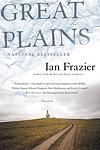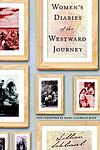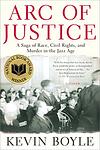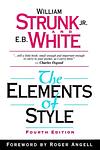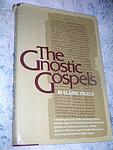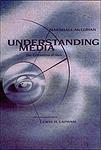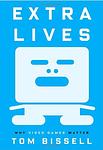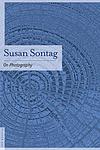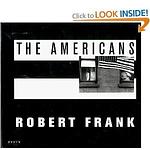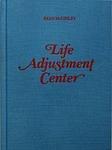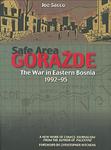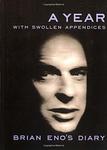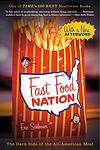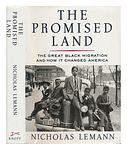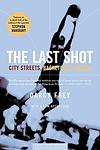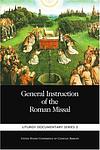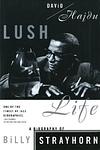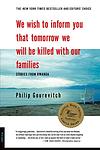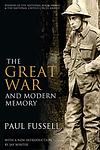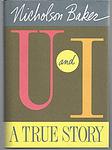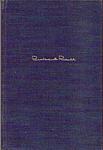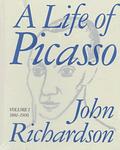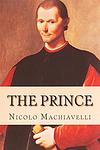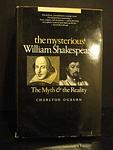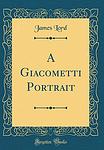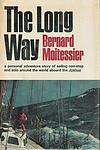As if You Don't Have Enough to Read, Best Non-Fiction from the NY Times Writers
This is one of the 284 lists we use to generate our main The Greatest Books list.
-
I Will Bear Witness by Victor Klemperer
"I Will Bear Witness" is a chilling personal account of life in Nazi Germany from 1933-1941. The author, a Jewish professor, meticulously details the daily life under Hitler's regime, capturing the fear, oppression, and constant threat that Jews faced. The diary serves as a powerful testament to the horrors of the Holocaust and the resilience of those who endured it.
-
What It Takes by Richard Ben Cramer
This book provides an in-depth look at the 1988 United States presidential election, focusing on the personal and political lives of the candidates. It delves into the grueling process of running for president, exploring the intense scrutiny, relentless schedule, and the physical and emotional toll it takes on the candidates and their families. The book also explores the complexities of American politics, the role of media, and the power dynamics within the political landscape.
-
Tears in the Darkness by Michael Norman, Elizabeth M. Norman
This book provides a harrowing account of the Bataan Death March and its aftermath during World War II, focusing on the experiences of American soldiers captured by the Japanese in the Philippines. It centers on one young soldier's ordeal, offering a detailed narrative of his struggle for survival in the face of brutal captivity and the inhuman conditions of prisoner-of-war camps. The work is a testament to the resilience of the human spirit, as well as a sobering examination of the atrocities of war and the psychological scars borne by those who endure its worst cruelties.
-
Great Plains by Ian Frazier
"Great Plains" is a travelogue that takes readers on a journey through the vast expanse of the American Great Plains, exploring its history, geography, and culture. The author travels from North Dakota to Texas, delving into the history of Native Americans, pioneers, and outlaws. The book provides a detailed account of the region, its people, and its significance in shaping the American West, offering a vivid portrait of the landscape and its influence on the country's identity.
-
The Family, Sex and Marriage in England 1500-1800 by Lawrence Stone
This scholarly work provides an in-depth analysis of the transformation of family life, sexual mores, and marital structures in England from the 16th to the 18th century. It examines the shift from the medieval extended family to the closed domesticated nuclear family, exploring how economic, social, legal, and cultural changes influenced personal relationships and societal norms. The book delves into the roles of love, sex, and marriage during this period, revealing how the evolution of these concepts was intertwined with broader historical developments such as the Protestant Reformation, the rise of individualism, and the changing economic landscape. Through meticulous research, the text presents a comprehensive view of how private life was redefined over three centuries, reflecting the complex interplay between tradition and change in early modern England.
-
Parallel Lives: Five Victorian Marriages by Phyllis Rose
This book delves into the intimate dynamics of matrimony in the Victorian era through the examination of five distinct marriages among prominent literary and intellectual figures of the time. By exploring the relationships of these influential couples, the work reveals the complexities and challenges of Victorian marriage, including the negotiation of traditional roles, the impact of societal expectations, and the personal struggles and triumphs that defined these partnerships. The text serves as both a historical exploration and a commentary on the evolving nature of love, commitment, and companionship, offering a nuanced perspective on the private lives that influenced public personas and cultural legacies.
-
The Politics of American English, 1776-1950 by David Simpson
This book provides a historical analysis of the political significance of the English language in the United States from the nation's founding through the mid-20th century. It explores how language has been used as a tool of nation-building, a means of establishing identity, and a battleground for cultural and political disputes. The text delves into the debates over linguistic purity, the role of English in education and immigration policies, and the shifting ideologies that have influenced the way Americans speak and write. By examining the intersection of language and politics, the book reveals the complex ways in which the evolution of American English reflects the nation's broader social and political transformations.
-
Women's Diaries of the Westward Journey by Lillian Schiessel
This book provides a poignant and revealing collection of personal accounts from women who traveled across the American frontier during the 19th century. Through the intimate lens of their diaries and letters, it offers a unique perspective on the hardships, hopes, and daily lives of female pioneers. The narratives highlight the emotional and physical challenges these women faced, from dealing with disease and death to managing domestic duties in the harsh and often unforgiving environment. The compilation not only serves as a historical record of the westward expansion but also as a testament to the resilience and strength of women in the face of adversity.
-
The Warrior's Honor: Ethnic War and the Modern Conscience by Michael Ignatieff
The book explores the moral and ethical challenges faced by modern societies when confronted with ethnic conflicts and wars. It delves into the complexities of humanitarian intervention, the role of the media in shaping public perception, and the struggle to reconcile the principles of human rights with the brutal realities of ethnic violence. Through a series of case studies and philosophical reflections, the author examines the tension between the universal claims of morality and the particular loyalties of kinship and nationality, questioning the capacity of moral conscience to mediate in conflicts where deep-seated cultural and ethnic animosities are at play.
-
Boys on the Bus by Timothy Crouse
The book provides an insightful examination of the journalists who covered the 1972 United States presidential campaign, revealing the competitive and often cynical nature of the reporting process. It delves into the pack journalism mentality that shaped the news and influenced public perception, highlighting how reporters often followed lead stories and narratives set by a few influential correspondents, rather than seeking out original angles. The work is a critical look at the relationship between the press corps and the political operatives, showcasing the impact of media on American politics and the challenges of objective reporting in the midst of a grueling campaign trail.
-
Politics by Hendrik Hertzberg
"Politics" is a collection of essays and commentaries that delve into the intricacies of American political life and governance. The book offers a sharp, insightful look at the landscape of U.S. politics, examining the ideologies, personalities, and events that have shaped the nation's public affairs. Through a series of eloquent and often witty pieces, the author provides readers with a deep understanding of the political process, the power of rhetoric, and the role of the media, all while advocating for progressive values and reforms. The work serves as both a critique and a celebration of American democracy, highlighting the author's passion for civic engagement and the continuous quest for a more equitable society.
-
Arc of Justice by Kevin Boyle
"Arc of Justice" is a riveting and complex story that unfolds in the racially tense backdrop of 1920s Detroit. The narrative follows an African American physician who moves his family into a predominantly white neighborhood, resulting in a chain of violent events. The doctor stands trial for murder, and the case garners national attention. The book delves into the doctor's fight for justice and the broader societal implications of racial tension, prejudice, and civil rights in America.
-
The Devil In The White City by Erik Larson
This book intertwines the true tales of two men during the 1893 Chicago World's Fair: Daniel H. Burnham, the architect responsible for the fair's construction, and H.H. Holmes, a serial killer masquerading as a charming doctor. The narrative alternates between the story of Burnham, his challenges and successes in building the fair, and the chilling story of Holmes, who used the fair to lure his victims to their death. It's a vivid portrayal of the Gilded Age and a chilling exploration of one of America's first known serial killers.
-
Marie Antoinette by Antonia Fraser
This historical biography provides an in-depth look at the life of the last Queen of France before the French Revolution. It delves into her Austrian origins, her marriage to Louis XVI, and her role in the opulent and politically turbulent court of Versailles. The book portrays her as a woman more complex and sympathetic than the often portrayed frivolous queen, examining her personal relationships, her struggles with the hostile French public, and her ultimate tragic end at the guillotine. Through meticulous research, the narrative aims to dispel the myths surrounding her legacy, offering a nuanced account of her life and the tumultuous era she lived in.
-
In Cold Blood by Truman Capote
This true crime novel tells the story of the brutal 1959 murder of a wealthy farmer, his wife and two of their children in Holcomb, Kansas. The narrative follows the investigation led by the Kansas Bureau of Investigation that ultimately leads to the capture, trial, and execution of the killers. The book explores the circumstances surrounding this horrific crime and the effects it had on the community and the people involved.
-
Into the Wild by Jon Krakauer
This striking narrative non-fiction tells the real-life story of a young man who turns his back on society to live in the Alaskan wilderness. Despite a privileged background and a promising future, he donates his savings to charity, abandons his car and most of his possessions, and embarks on a journey into the wild. His solitary existence in the wild, his struggles for survival, and his untimely death provide a profound exploration of the allure of wilderness and the human yearning for solitude and self-discovery.
-
Infidel by Ayaan Hirsi Ali
The book is a powerful memoir of a woman who was born into a traditional Muslim family in Somalia. She recounts her experiences of growing up in a strict Islamic culture, female genital mutilation, civil war, fleeing to the Netherlands as a refugee, and her eventual rejection of her faith after witnessing its violent and oppressive nature. The book also follows her journey into politics and advocacy for women's rights and her efforts to reform Islam. It's a tale of courage, resilience, and the quest for freedom and truth.
-
Camera Lucida by Roland Barthes
The book in question is a seminal work in the field of photography theory, blending personal reflection with philosophical investigation. The author delves into the nature of photography, exploring the medium's ability to capture the essence of a moment and its subjects. Through a two-part analysis, the author introduces concepts such as the studium and punctum to articulate the layers of meaning and emotional response elicited by photographs. The work is also a meditation on loss and memory, inspired by the author's search for the essence of his late mother in her photographs. The text is both an intimate journey and a critical examination of the power of images to evoke and preserve the fleeting nature of existence.
-
Mythologies by Roland Barthes
This book is a collection of essays that explore the layers of cultural and societal meanings that are imbued in everyday objects, activities, and phenomena. The author decodes the symbols and signs embedded in things as varied as wrestling, soap detergents, toys, and even the face of Greta Garbo. The book is a pioneering exploration of semiotics, the study of signs and symbols, and it challenges readers to question and understand the cultural connotations and ideologies that are presented as natural or given in our everyday lives.
-
Regarding the Pain of Others by Susan Sontag
The book is a deep exploration of how we perceive and engage with images of suffering and atrocity, particularly through photography. It critically examines the role of visual media in shaping our understanding of war, violence, and tragedy, questioning the ethics and impact of spectatorship. The author delves into the history of war photography, the intentions behind capturing such images, and the desensitization that can occur from repeated exposure. The text challenges readers to consider their own responses to these images and the complex interplay between empathy, conscience, and the consumption of others' pain.
-
The Year of Magical Thinking by Joan Didion
This book is a raw and honest exploration of grief and mourning, written by a woman who lost her husband of 40 years to a heart attack while their only child lay comatose in the hospital. The narrative delves into the year following her husband's death, a year marked by grief, confusion, and a desperate hope for things to return to normal. The author's poignant reflections on death, love, and loss serve as a powerful testament to the resilience of the human spirit.
-
The Elements of Style by E. B. White, William Strunk Jr.
This book is a definitive guide and classic manual on the principles of English language read by millions of readers. The 18 main topics are organized under headings such as Elementary Rules of Usage, Elementary Principles of Composition, A Few Matters of Form, Words and Expressions Commonly Misused, and An Approach to Style. The book's unique tone, wit and charm have conveyed the principles of English style to millions of readers, making it a beloved resource for those who want to write clear, correct and effective prose.
-
The Devil's Teeth by Susan Casey
This non-fiction book offers a gripping account of the author's fascination with the Great White sharks that inhabit the Farallon Islands, a small group of islands off the coast of California. The narrative delves into the history and science of these formidable predators, as well as the author's own daring adventures as she joins a team of biologists studying the sharks in this treacherous location. The book combines elements of natural history, adventure, and personal memoir to provide an intimate look at one of nature's most awe-inspiring creatures and the perilous environment they call home.
-
The Autobiography of Malcolm X by Alex Haley
This book is an autobiography narrating the life of a renowned African-American activist. It delves into his transformation from a young man involved in criminal activities to becoming one of the most influential voices in the fight against racial inequality in America. The book provides a deep insight into his philosophies, his time in prison, conversion to Islam, his role in the Nation of Islam, his pilgrimage to Mecca, and his eventual split from the Nation. It also addresses his assassination, making it a powerful account of resilience, redemption, and personal growth.
-
Shadow Divers by Robert Kurson
This non-fiction book chronicles the dangerous and suspenseful adventure of two deep-sea wreck divers who, in 1991, discovered a sunken German U-boat off the coast of New Jersey. Despite the risks and the skepticism of experts, the divers became obsessed with identifying the seemingly untraceable submarine. Their quest for answers led them to delve into historical records and put their lives on the line during numerous dives, ultimately revealing the U-boat's identity and bringing closure to a long-lost chapter of World War II history. The story is a testament to the power of curiosity, perseverance, and the human spirit's drive to solve the mysteries of the past.
-
Silent Spring by Rachel Carson
This influential environmental science book presents a detailed and passionate argument against the overuse of pesticides in the mid-20th century. The author meticulously describes the harmful effects of these chemicals on the environment, particularly on birds, hence the metaphor of a 'silent spring' without bird song. The book played a significant role in advancing the global environmental movement and led to a nationwide ban on DDT and other pesticides in the United States.
-
What Is the What by Dave Eggers
The novel is a fictionalized account of a real-life Sudanese refugee, Valentino Achak Deng, who was forced to flee from his village during the Second Sudanese Civil War. The story follows his harrowing journey as a child through Ethiopia and Kenya, his life in various refugee camps, and his eventual resettlement in the United States. The book explores themes of survival, identity, and the power of storytelling, while shedding light on the tragic history and ongoing humanitarian crisis in Sudan.
-
The Gnostic Gospels by Elaine Pagels
This book explores the findings of the Nag Hammadi library, a collection of gnostic texts discovered in 1945. The author examines these texts, which were excluded from the canonical Bible, and discusses their implications for our understanding of early Christianity. The book delves into the diversity of beliefs in early Christian communities, the role of women in these groups, and the political and theological reasons behind the formation of the orthodox Christian canon.
-
Understanding Media by Marshall McLuhan
The book is a seminal work in media theory that explores the profound effects of different communication technologies on human thought, behavior, and society. The author argues that the medium through which information is conveyed is just as important, if not more so, than the content of the information itself. This concept is encapsulated in the famous phrase "the medium is the message," which suggests that the characteristics of the medium influence how the message is perceived and understood. The book examines a wide range of media, from the spoken word to the printed word, to television and beyond, and posits that each medium, by its very nature, shapes and controls the scale and form of human association and action.
-
Extra Lives by Tom Bissell
This book delves into the cultural and emotional impact of video games, exploring their role as an emerging art form and a complex storytelling medium. The author, an avid gamer himself, combines personal narrative with critical analysis, examining various game genres and franchises while discussing his own experiences with addiction and the social implications of gaming. Through interviews with game developers and reflections on his own gaming history, the author presents an insightful look at how video games captivate and influence their audiences, shaping perceptions and pushing the boundaries of interactive entertainment.
-
Lenin's Tomb: The Last Days of the Soviet Empire by David Remnick
This book provides an in-depth account of the final days of the Soviet Union, focusing on the period from 1989 to 1991. It explores the political, economic, and social factors that led to the collapse of the Soviet empire, including the role of key figures such as Mikhail Gorbachev, Boris Yeltsin, and others. The author, a journalist who lived in Moscow during this time, combines historical analysis with personal observations and interviews, offering a unique perspective on this significant period in world history.
-
On Photography by Susan Sontag
The book is a seminal critique and exploration of the art, philosophy, and consequences of photography. It delves into the medium's history, its role in shaping society's perception of reality, and the ethical implications of capturing images. The author argues that photography, as a ubiquitous form of documentation, has altered the way people interact with the world, creating a collective memory bank but also leading to a detachment and passivity in the face of the photographed subjects. Through a series of essays, the work examines the power dynamics inherent in photography, the commodification of images, and the medium's impact on art and culture, ultimately questioning the nature of seeing and the truth in representation.
-
The Americans by Robert Frank
"The Americans" is a photographic journey through the United States in the 1950s, capturing the everyday lives of its citizens. The book presents a raw, unfiltered view of American society during this time, revealing both its strengths and weaknesses. It offers a unique perspective on the country's culture, racial tensions, economic disparities, and political climate, providing a profound commentary on the American experience.
-
Dear Theo: The Autobiography of Vincent Van Gogh by Irving Stone, Jean Stone
The book is a compilation of letters from the renowned Dutch painter to his brother Theo, offering an intimate glimpse into the artist's life, thoughts, and struggles. Through these personal correspondences, readers gain insight into the painter's evolving artistic vision, his financial hardships, and his battle with mental illness. The letters also reveal the deep bond between the brothers, with Theo providing unwavering emotional and financial support. This collection not only sheds light on the painter's complex inner world but also provides a unique perspective on his journey to becoming one of the most influential figures in the history of Western art.
-
Life Adjustment Center by Ryan McGinley
Two themes are presented in this book, firstly a collection of b&w studio nudes many with wild animals, an extension of the studio series "Everybody Knows This is Nowhere". The second features one of McGinley's core elements as a photographer, “capturing his subjects in dreamlike compositions, rich in motion and color, during recent adventures on the road”. The book is bound in a blue cloth with red text on cover and spine and a red stain to the page edges.
-
A Pattern Language: Towns, Buildings, Construction by Christopher Alexander
This book is a seminal work in the field of architecture and urban design, presenting a holistic system for designing spaces at every scale, from regions and towns to individual buildings and rooms. It introduces 253 interrelated patterns that address the social, psychological, and practical needs of inhabitants, each pattern describing a problem and offering a core solution. The work emphasizes the importance of creating environments that are human-centered, harmonious, and adaptable, encouraging readers to apply these timeless patterns to create spaces that are aesthetically pleasing, functional, and inherently satisfying to live and work in.
-
Safe Area: Gorazde by Joe Sacco
"Safe Area: Gorazde" is a graphic novel that provides a harrowing and deeply personal account of the Bosnian War, focusing on the experiences of the inhabitants of Goražde, a Bosnian enclave that was declared a UN "safe area" during the conflict. Through a blend of journalism and art, the book portrays the daily struggles, horrors, and resilience of the people who lived through the siege, as well as the complexities of the war. The author's immersive storytelling and detailed illustrations bring to light the human cost of war, the failures of international intervention, and the enduring spirit of those who survived amidst the chaos and violence of the early 1990s.
-
Revolution in the Head: The Beatles' Records and the Sixties by Ian MacDonald
This book provides a comprehensive analysis of the Beatles' music and its cultural impact during the 1960s. It delves into the creation and significance of each track, examining the technical innovations, lyrical content, and the sociopolitical context of the era. The work offers a song-by-song breakdown, exploring how the band's evolving creative dynamics and the tumultuous decade they helped define were reflected in their recordings. It is both a critical study of the band's discography and a reflection on the revolutionary spirit of the sixties, highlighting how the group's work was intertwined with the broader changes in music, politics, and society.
-
A Year by Brian Eno
This book is a collection of diary entries, essays, and musings by a renowned musician and producer known for his work in ambient music and contributions to various other genres. Over the course of a year, the author reflects on his creative process, the nature of art and music, and his interactions with other artists and cultural figures. The entries provide insight into his thoughts on the evolution of music, the role of technology in art, and his philosophical perspectives on life and the world around him. The book serves as a window into the mind of an influential artist, offering readers a unique look at his day-to-day life and the intellectual underpinnings of his work.
-
Fast Food Nation by Eric Schlosser
This book is an in-depth exploration of the fast food industry in America, examining its history, business practices, and impact on society. The author investigates the industry's influence on America's economy, health, and culture, revealing disturbing facts about the production process, the exploitation of workers, and the health risks associated with fast food consumption. The book serves as a critique of the fast food industry and its detrimental effects on American society.
-
The Promised Land: The Great Black Migration and How It Changed America by Nicholas Lemann
The book chronicles the epic relocation of African Americans from the rural South to the urban North of the United States between World War I and the 1970s. This transformative movement, known as the Great Migration, is examined through the lens of its profound impact on American society, politics, and culture. The narrative delves into the hopes, struggles, and aspirations of the migrants as they sought better opportunities and faced the challenges of racism, economic hardship, and cultural adaptation in their new communities. The author provides a comprehensive analysis of how this demographic shift reshaped the urban landscape, influenced the civil rights movement, and ultimately altered the fabric of the nation.
-
Genie: A Scientific Tragedy by Russ Rymer
This book delves into the heart-wrenching story of a young girl who was a victim of severe neglect and isolation for the first thirteen years of her life, leading to significant psychological and developmental issues. Discovered by authorities in the 1970s, she became the subject of intense research and debate within the scientific community, particularly in the field of language acquisition. The narrative critically examines the ethical implications of her treatment by researchers and foster care systems, as well as the broader questions about nature versus nurture and the limits of rehabilitation. The girl's tragic circumstances provide a unique case study into human development and the resilience of the human spirit in the face of unimaginable adversity.
-
The Last Shot by Darcy Frey
This book provides a vivid account of the lives of four high school basketball players from Coney Island, New York, who dream of making it to the NBA. The narrative delves into the challenges and pressures they face, both on and off the court, as they navigate their senior year, aiming to secure college scholarships and rise out of their impoverished neighborhood. The author offers a poignant exploration of the intersection of sports, education, and socioeconomic status, revealing the slim odds and high stakes involved in the pursuit of athletic success as a means of escaping a cycle of poverty.
-
The Journalist and the Murderer by Janet Malcolm
The book is a gripping exploration of the uneasy relationship between journalists and their subjects. It delves into the ethical dilemmas faced by journalists when they become too involved with their subjects. The narrative centers around a lawsuit between a convicted murderer and the author who wrote about his case, revealing the blurred lines between objectivity and subjectivity in journalism. The book also raises questions about the morality and responsibility of the journalistic profession.
-
A Commotion in the Blood by Stephen S. Hall
The book examines the history and evolution of immunotherapy in the treatment of cancer, delving into the scientific challenges, breakthroughs, and setbacks faced by researchers in their quest to harness the body's immune system to fight malignancies. It explores the stories of scientists and patients involved in this medical frontier, offering insights into the complex interplay between cancer and the immune system, and the perseverance and ingenuity that have driven the search for effective treatments. The narrative captures the hope, controversies, and ethical dilemmas that have accompanied the development of cancer immunotherapies, providing a comprehensive look at a field that stands at the crossroads of biomedical research.
-
Always Magic in the Air by Ken Emerson
This book delves into the golden age of American pop music, focusing on the period during the late 1950s and early 1960s. It chronicles the stories of fourteen songwriting teams who were central to the creation of classic hits in the legendary Brill Building in New York City. The narrative captures the creative energy and collaborative spirit of these composers and lyricists, who crafted some of the most memorable tunes of the era, shaping the sound of a generation and leaving an indelible mark on the landscape of popular music. Through personal anecdotes and historical insights, the book paints a vivid portrait of an influential epoch in the music industry.
-
The Bible by Unknown
The Bible is the central religious text of Christianity, comprising the Old and New Testaments. It features a diverse collection of writings including historical narratives, poetry, prophecies, and teachings. These texts chronicle the relationship between God and humanity, detail the life, death, and resurrection of Jesus Christ, and follow the early Christian church. Considered divinely inspired by believers, it serves as a foundational guide for faith and practice, influencing countless aspects of culture and society worldwide.
-
Outliers by Malcolm Gladwell
The book examines the factors that contribute to high levels of success. Through a compilation of anecdotes and analyses of various cultural phenomena, it argues that success is not simply a result of individual talent or intelligence, but rather the result of a combination of opportunities, hidden advantages, cultural legacies, and the amount of time spent practicing a specific task. The author challenges the traditional notion of the "self-made" individual by emphasizing the importance of external influences and timing, such as being born in a certain era or having access to specific resources, in shaping one's ability to achieve extraordinary accomplishments.
-
Lush Life by David Hajdu
"Lush Life" is a biography that chronicles the life and times of a legendary jazz composer and arranger, exploring his profound influence on the world of music. The book delves into the artist's creative genius, his contributions to the evolution of jazz, and his collaborations with other iconic musicians. It also paints a vivid picture of the cultural and social milieu that shaped his career, detailing his personal struggles, triumphs, and the legacy he left behind in the tapestry of American music. Through meticulous research and interviews, the narrative captures the essence of an era and the spirit of a man whose work became synonymous with the sound of an age.
-
About a Mountain by John D'Agata
The book is an intricate exploration of the complexities surrounding Yucca Mountain in Nevada, proposed as a site for nuclear waste storage. It weaves together a narrative that is part investigative journalism, part philosophical reflection, and part personal anecdote. The author delves into the political, environmental, and ethical questions posed by the potential storage of radioactive material, while also examining the broader themes of human fallibility, the limits of knowledge, and the transient nature of truth. The narrative is punctuated by the story of a Las Vegas teenager's suicide, which serves as a poignant counterpoint to the monumental issues concerning the mountain, highlighting the interplay between the monumental and the intimate in the landscapes of the American West.
-
We Wish to Inform You That Tomorrow We Will Be Killed With Our Families: Stories from Rwanda by Philip Gourevitch
This book is a chilling account of the Rwandan genocide that took place in 1994, where an estimated 800,000 to 1 million Tutsis and moderate Hutus were systematically murdered within a span of 100 days. The author provides a detailed narrative based on interviews with survivors and perpetrators, shedding light on the horrifying events, the international community's failure to intervene, and the aftermath of the genocide. The book serves as a powerful critique of political indifference and a poignant exploration of the depths of human brutality.
-
The Perfect Storm by Sebastian Junger
This non-fiction book narrates the story of the Andrea Gail, a commercial fishing vessel that was lost at sea during the "Perfect Storm" of 1991. The author combines meteorological science, history, and personal accounts to paint a vivid picture of the harrowing ordeal faced by these six fishermen. The book also explores the dangerous profession of deep-sea fishing and the tight-knit communities that are affected by such tragedies.
-
The Great War and Modern Memory by Paul Fussell
"The Great War and Modern Memory" is a critical analysis of the impact of World War I on the English society and culture. The author explores the war's influence on literature, language, and symbolism, arguing that the horrific experiences of the war drastically altered public perception and understanding of conflict, honor, and heroism. The book combines literary criticism, history, and social commentary to provide a comprehensive examination of the war's lasting effects on the collective memory of the English-speaking world.
-
Candide by Voltaire
"Candide" is a satirical novel that follows the adventures of a young man, Candide, who is living a sheltered life in an Edenic paradise and being indoctrinated with Leibnizian optimism by his mentor. When he is expelled from the paradise for kissing a baron's daughter, he embarks on a journey around the world, witnessing the horrors of war, natural disasters, and human cruelty. Throughout his journey, Candide maintains his optimistic philosophy, despite the constant hardships he faces, ultimately concluding that one must cultivate their own garden, a metaphor for taking control of one's own destiny.
-
Hiroshima by John Hersey
This book provides a detailed account of the aftermath of the atomic bombing of Hiroshima during World War II, as experienced by six survivors. The narrative follows the survivors from the moment of the explosion to their lives in the following years. It explores their struggles, their resilience, and the profound physical, emotional, and social impacts of the event, offering a poignant examination of the human capacity to endure and rebuild in the face of unimaginable devastation.
-
U and I by Nicholson Baker
In this unique and introspective work, the author embarks on a literary journey that explores his fascination with the writing and persona of a celebrated American author, whose influence looms large over his own work. Through a blend of memoir, criticism, and homage, the book delves into the nature of fandom, memory, and the creative process. The author candidly shares his reflections and the impact of his literary hero's work on his life, all while admitting to having read only a small portion of the hero's extensive oeuvre. This candid exploration blurs the lines between reality and imagination, revealing the intimate and often complex relationship between a writer and their inspiration.
-
A History of Western Philosophy by Bertrand Russell
This book provides a comprehensive overview of Western philosophy from the pre-Socratic philosophers through the Middle Ages and the Renaissance, up to the early 20th century. It examines the ideas and contributions of major philosophers, including Plato, Aristotle, Descartes, Spinoza, Leibniz, Locke, Hume, Kant, and others, while also exploring the cultural and historical context in which their thoughts developed. The work is known for its accessible prose and critical perspective, as it not only presents philosophical concepts but also offers the author's analysis and interpretation of these ideas, highlighting their relevance to the broader sweep of human thought and society.
-
A Supposedly Fun Thing I'll Never Do Again by David Foster Wallace
"A Supposedly Fun Thing I'll Never Do Again" is a collection of seven essays that blends humor, insight, and philosophical pondering. The author explores a wide range of topics, from the impact of television on contemporary literature to the despair of the American cruise industry, and even the nature of David Lynch's films. The book is a brilliant showcase of the author's unique ability to see the extraordinary in the ordinary, all while using his sharp wit and expansive intellect to explore the complexities of modern life.
-
Conversations With Igor Stravinsky by Robert Craft
This book presents a series of intimate and revealing conversations between a renowned composer of the 20th century and his close associate, a conductor and musicologist. Through these dialogues, readers gain insights into the composer's thoughts on music, art, and life, as well as his personal experiences and the development of his unique compositional style. The discussions delve into various aspects of the composer's works, his collaborations with other prominent artists, and his reflections on contemporary culture and fellow musicians. The book offers a rare glimpse into the mind of one of the most influential figures in modern classical music, providing a deeper understanding of his creative process and artistic philosophy.
-
Discipline and Punish by Michel Foucault
This book delves into the historical evolution of the penal system, examining how Western societies have transitioned from a regime of violent, public physical punishment to a more subtle form of surveillance and control. It introduces the concept of the "panopticon," a metaphor for modern disciplinary societies that exercise power through observation and normalization rather than through overt physical coercion. The work explores the relationship between power, knowledge, and social control, arguing that disciplinary mechanisms are embedded in various institutions, such as schools, hospitals, and prisons, shaping individuals and maintaining order in society.
-
A Life of Picasso by John Richardson
This biography delves into the life of one of the most influential artists of the 20th century, Picasso. The book provides an in-depth look into his early life, his relationships, his artistic evolution, and his influence on the art world. It offers a comprehensive exploration of Picasso's personal and professional life, shedding light on his genius and the complexities of his character. The author's detailed research and intimate knowledge of the artist's life make this book a definitive biography of Picasso.
-
The Prince by Niccolo Machiavelli
This classic work of political philosophy provides a pragmatic guide on political leadership and power, arguing that leaders must do whatever necessary to maintain authority and protect their states, even if it means compromising morality and ethics. The book explores various types of principalities, military affairs, the conduct of great leaders, and the virtues a prince should possess. It is known for its controversial thesis, which suggests that the ends justify the means in politics.
-
Mexico: Biography of Power by Enrique Krauze
This book offers a comprehensive exploration of the political and social evolution of Mexico, tracing the country's history from the pre-Columbian era to the late 20th century. It delves into the lives and legacies of Mexico's influential leaders, examining how their exercise of power shaped the nation's identity and destiny. The narrative weaves through the complexities of Mexico's revolutions, reforms, and relationships with external powers, providing a deep understanding of the forces that have defined the country's path and the characters who have stood at the helm of its journey. Through a blend of biography and historical analysis, the work presents a vivid portrait of a nation's struggle for sovereignty, stability, and self-definition.
-
The Mysterious William Shakespeare: The Myth and the Reality by Charlton Ogburn
This book delves into the long-standing debate surrounding the true authorship of the works attributed to William Shakespeare. The author presents a comprehensive examination of the evidence and arguments that question the traditional attribution to the man from Stratford-upon-Avon, suggesting that the true author may have been someone with a more substantial educational background and worldly experience. Through meticulous research and analysis of historical documents, the book challenges readers to reconsider the accepted narrative about the identity of one of the most celebrated writers in the English language, proposing an alternative candidate who might have had the means, motive, and opportunity to produce the canon of plays and sonnets that have captivated audiences for centuries.
-
A Giacometti Portrait by James Lord
This book is a detailed account of the author's experience sitting for a portrait by a renowned 20th-century artist. Over the course of the sessions, the author provides an intimate look into the artist's meticulous and obsessive process, capturing the essence of his subject through an exhaustive and iterative approach. The narrative not only delves into the artistic method and the relationship between the artist and his model but also offers a profound reflection on the nature of art, perception, and the passage of time. The portrait sitting becomes a lens through which the reader gains insight into the artist's genius and the complexities of his character.
-
The Long Way by Bernard Moitessier
The book is a captivating narrative of a sailor's solo circumnavigation of the globe during a historic yacht race. Rejecting the trappings of fame and competition, the sailor chooses to continue sailing beyond the finish line, embracing the sea's vastness and his deep connection with nature. His journey becomes not just a test of physical endurance but a spiritual quest, as he reflects on life, the modern world, and the harmony found in simplicity. Through storms, wildlife encounters, and the solitude of the open ocean, the sailor's tale is a profound meditation on the human spirit and our relationship to the Earth.
-
Fear and Loathing on the Campaign Trail '72 by Hunter S. Thompson
This book is a visceral, first-person account of the 1972 presidential campaign, as seen through the eyes of a maverick journalist. It blends political analysis, cultural commentary, and personal anecdotes to capture the chaotic spirit of the election that pitted incumbent President Richard Nixon against Democratic challenger George McGovern. The narrative is infused with the author's signature gonzo style, characterized by a highly subjective and often satirical approach to journalism. Through a series of articles originally written for a major magazine, the book delves into the machinations of political operatives, the mood of the American electorate, and the dark underbelly of the campaign trail, all while grappling with the broader implications of the American political system.
-
The Poverty of Power by Barry Commoner
The book in question critically examines the interlinked crises of energy, economy, and ecology facing the United States in the 1970s, arguing that the capitalist system, with its reliance on fossil fuels and unsustainable growth, is fundamentally at odds with environmental protection and social equity. The author contends that the pursuit of profit has led to the concentration of wealth, energy shortages, pollution, and the degradation of natural resources, ultimately resulting in a form of poverty characterized by a lack of power for the majority to effect change. The work calls for a radical restructuring of societal values and energy policies to prioritize renewable resources, conservation, and a more equitable distribution of wealth and power.
New York Times, 68 Books
Inspired by The Guardian’s recent list of the 100 greatest nonfiction books, we here at the magazine decided to create our own list. Dispensing with all pretense to rigor — it’s a list, silly! — we simply asked each member of the staff to pick their five favorites.
Added 12 months ago.
This list has a weight of 57%. To learn more about what this means please visit the Rankings page.
Here is a list of what is decreasing the importance of this list:
- Voters: not critics, authors, or experts
- Voters: are mostly from a single country/location
If you think this is incorrect please e-mail us at [email protected].



